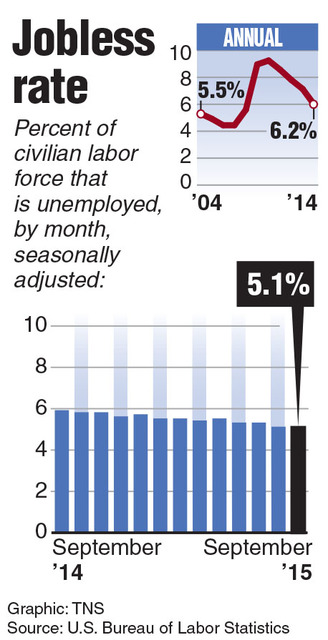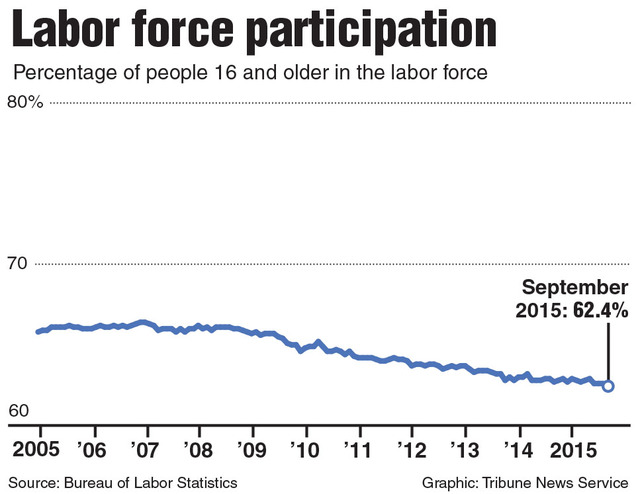WASHINGTON — The U.S. economy added just 142,000 net new jobs in September and average wages fells slightly, surprising signs that labor market growth has stalled amid global economic troubles. ADVERTISING WASHINGTON — The U.S. economy added just 142,000 net
WASHINGTON — The U.S. economy added just 142,000 net new jobs in September and average wages fells slightly, surprising signs that labor market growth has stalled amid global economic troubles.
Job growth in August also was revised down sharply to 136,000, the Labor Department said Friday.
Economists had expected an upward revision for August. Instead, growth in July and August was revised down by a total of 59,000 positions, indicating that the labor market slowdown began earlier in the summer.
After averaging 260,000 net new jobs a month last year, the labor market is averaging just 167,000 over the last three months.
The unemployment rate in September held steady at 5.1 percent, the lowest since 2008, but that was because about 350,000 people dropped out of the labor force.
The percentage of adults in the labor force declined to just 62.4 percent last month, the lowest since the late 1970s.
Wages slipped last month after two solid months of growth, another troubling sign. Average hourly earnings fell by 1 cent to $25.09 last month after rising by 9 cents in August.
Economists expected job growth to rebound last month, forecasting a gain of 203,000 net new positions. The unemployment rate was expected to hold steady at 5.1 percent.
All together, the disappointing report is likely to make Federal Reserve policymakers hesitant to raise a key interest rate later this month. A rate hike by the end of the year also is in question, said Chris Rupkey, chief financial economist at Union Bank in New York.
“The idea the U.S. economy could power forward while the rest of the world is stalling out, that idea can be put in the garage bin,” he said.
Friday’s jobs report is the last one before Fed officials meet at the end of the month to consider whether to raise the key interest rate for the first time in nearly a decade.
At their September meeting, Fed officials opted to keep the so-called federal fund rate at the near 0 percent level it has been since late 2008.
Throughout the summer, many analysts had been expecting a small rate hike in September, but global financial markets began falling in late August amid signs the Chinese economy was slowing.
Central bank policymakers decided they wanted to see some more economic data before raising the rate to determine if the market turmoil and global slowdown was harming the U.S. economy.




